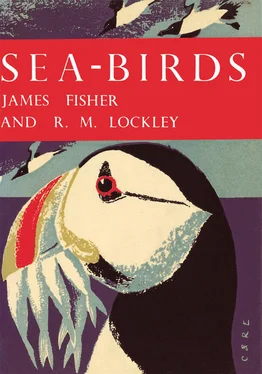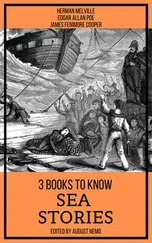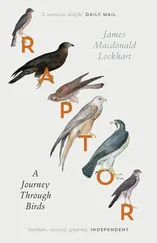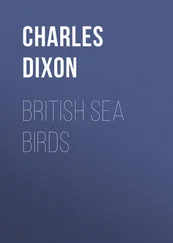In French Guiana, however, rocky promontories and islets appear, and they are inhabited by some sea-birds; regrettably little is known about the species involved, but they probably include boobies and tropic-birds. Along the coast of Dutch and British Guiana we are once more in a muddy coast with no headlands or islands. North-west of the mouth of British Guiana’s main river, the Essiquibo, there are some shell-beaches, but most of the coast is of mangrove-swamp jungle, in which the only animal resembling a sea-bird is the Mexican or bigua cormorant Phalacrocorax olivaceus. Over the Venezuelan border we are at once in the delta of the great river Orinoco. It is a land of dense mangrove forest and a very large number of low wooded islands. Off-shore the immense tonnage of mud and silt is seized by the equatorial current and driven northwards towards Trinidad, which it thus provides with a very wide continental shelf. As Murphy (1936, see here) writes, “The delta of the Orinoco is not the home of birds that can be called marine … Only our adaptable old friend the Bigua cormorant seems … at home.”
Generally speaking, from the mouth of the Amazon to the mouth of the Orinoco the coast scarcely harbours a breeding sea-bird. However, the British islands of Trinidad and Tobago, off the northeast corner of Venezuela are provided with rocky promontories and many islets on which sea-birds nest. The brown pelican Pelecanus occidentalis , the red-footed booby Sula sula , the man-o’-war or frigate-bird Fregata magnificens , nest on low trees or on mangroves. On the bare Soldado rock the sooty tern Sterna fuscata , and the two species of noddy, nest. One tubenose, Audubon’s shearwater Puffinus I’herminieri , nests on Tobago, which is its southernmost breeding place on this coast. The gull-billed tern nests in fresh water marshes.
West of Trinidad we are in the Caribbean Sea and following the coast, which for 250 miles more has a wide continental shelf, with small islands dotted in it. Opposite the western part of Venezuela, however, the water is much deeper close in-shore, and the off-coast islands of Curaçao and other Dutch possessions rise from a deep sea. Both the islands of the shallow shelf, such as Los Hermanos and the Testigos, and these Dutch islands, have many sea-birds, including three kinds of boobies, man-o’-war birds, tropic-birds, noddies and sooty terns. At least eight species of terns are found at Aruba, the westernmost of the Dutch islands. But there are few species which can be described as oceanic, though the boobies are marine; many of the sea-birds probably nest on the islands rather than on the mainland because of the additional safety and the existence of outcrops of rock such as are not found along the interminable mangrove coast.
Of all coasts that we have so far considered, those of northern Venezuela are the driest, and the Caribbean is the hottest part of the North Atlantic region. The western Caribbean, however, has intense summer rain; in spite of this, evaporation is great and the equatorial current is boosted along, flowing into the Gulf of Mexico with some rapidity.
In the Antilles, which form the eastern and northern boundaries of the Caribbean Sea, we find islands clad still in fairly thick jungle vegetation, with coastal mangroves, but also many sandy islets and bars and real coral reefs. Though the Guiana coast was too muddy to support coral reefs, these are found fringing the islands north of Venezuela, such as Curaçao. There are also many reefs along the western shore of the Caribbean, particularly at the corner of Nicaragua and Honduras, at the end of the shallow Mosquito Bank. Throughout the West Indies the distribution of sea-birds is linked primarily with available food, but that of the breeding adults probably also with available nesting-sites. Islets where there are exposures of rock or sand are much favoured, but some species as we have seen, including the red-footed booby, the brown pelican, the bigua cormorant, the darter Anhinga anhinga , and some terns, nest in trees. One very rare petrel Pterodroma hasitata ( see here) nests above the tree-line on some of the West Indian islands, among the rocks of steep mountains.
A typical sea-bird islet in the West Indies is Desecheo, described by Alexander Wetmore. This lies in the hot dry zone west of Porto Rico. It is a rocky islet with cliffs and a gravel beach, and a thin top-soil covered with a dense thicket of cacti and the curious West Indian birch. Here brown boobies nested on the ground among the thickets and floundered through the prickly pear and cactus. Sooty terns nested on ledges, on shelves on the limestone cliffs, and B. S. Bowdish found a few bridled terns Sterna anaetheta , nesting on flat ledges. This species also breeds on the little islets or cays of the Barrier Reef south of Jamaica, among the broken coral rock and the mangroves.
North of the Antilles the low-lying British islands of the Bahamas occupy a large area of the west Atlantic. The blue Atlantic beats directly against steep east-facing limestone cliffs, while to the west there are shelving beaches. Many of these islands are covered with cacti, and the sea-grape Coccolobis , which forms low, thick vegetation in which brown boobies nest, scraping slight hollows in the ground and lining them with grass. In some Bahamas the man-o’-war bird builds its nest quite on top of the prickly pears, though more normally on the mangroves in the swamps, together with brown pelicans and the double-crested cormorant of Florida Phalacrocorax auritus floridanus. Upon the more exposed sandspits in the Bahamas several kinds of tern breed, including the gull-billed tern, the little tern Sterna albifrons , the roseate tern S. dougallii , Cabot’s tern Thalasseus sandvicensis , and the sooty tern.
The coast of the Gulf of Mexico is low-lying, with coral reefs and an extensive continental shelf, especially off Yucatan. Breeding sea-birds are scarce, except terns and the ubiquitous bigua cormorant, which is as much a fresh-water as a salt-water bird. The Sandwichtern, which is known as Cabot’s tern in North America, breeds in several parts of the Gulf coast of Mexico, which is more suited for terns than for any other sea-birds. On the grassy islands among the lagoons and marshes of the Texas coast, the gull-billed tern and Forster’s tern Sterna forsteri , are found. The beautiful Caspian tern Hydroprogne caspia , also nests in a few places on sandy islands, and there is an interesting outpost breeding-station of the white pelican Pelecanus erythrorhynchos , on the Laguna de la Madre, south of Corpus Christi, near the Border. The rest of the population of this fine bird is found in western North America.
Along the Louisiana coast, where there are many protected reservations, there are very big colonies of the laughing gull Larus atricilla , especially in the marshy islands of the Mississippi delta, which are overgrown with grass and low mangroves. One of the reservations is in the Breton Islands, 114 miles off the main Louisiana coast. Here are great colonies of terns on low flat sandy spits, including Caspian, Cabot’s and royal Thalasseus maximus (Bent 1921). Forster’s and common terns Sterna hirundo , also nest in the Breton Islands, as do numbers of the extraordinary black skimmer, an aberrant tern whose lower mandible is prolonged and with which it scoops food from the surface of the sea. The peninsula of Florida has to its west an immense continental shelf, along the lower end of which is a famous chain of Keys. Beyond Key West, at the terminus of the Key railway, many miles to sea, lie the dry Tortugas, flat islands of coral, their surface, largely of coral sand, clothed in parts with dense cactus as well as with bay cedar, with many bare and grassy spaces between. On the cedars and the cactus immense numbers of noddy terns nest: often over the nests of the sooty terns on the ground below.
Читать дальше












